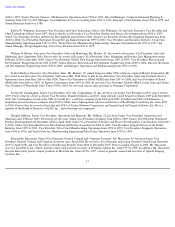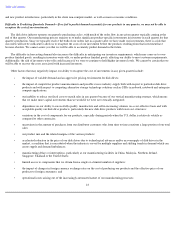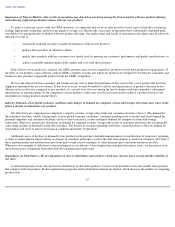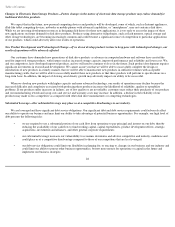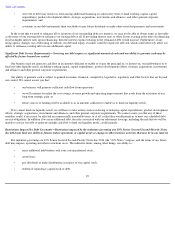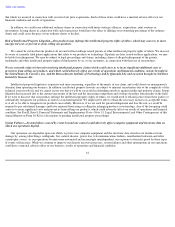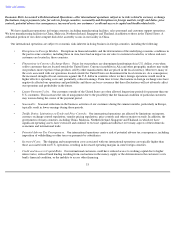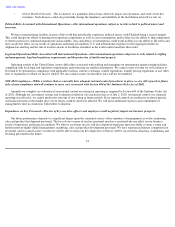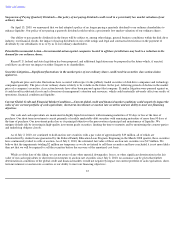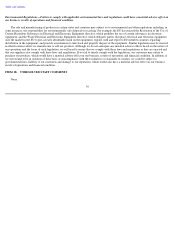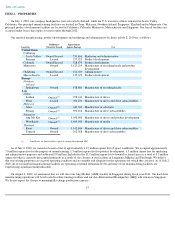Seagate 2009 Annual Report Download - page 29
Download and view the complete annual report
Please find page 29 of the 2009 Seagate annual report below. You can navigate through the pages in the report by either clicking on the pages listed below, or by using the keyword search tool below to find specific information within the annual report.
Table of Contents
solutions as well as an inability to maintain effective working relationships with retail and online distributors may adversely impact our future
results of operations.
Importance of Controlling Operating Costs
—If we do not control our operating expenses, we will not be able to compete effectively in our
industry.
Our strategy involves, to a substantial degree, increasing revenue and product volume while at the same time controlling operating
expenses. If we do not control our operating expenses, our ability to compete in the marketplace may be impaired. In the past, activities to reduce
operating costs have included closures and transfers of facilities, significant personnel reductions and efforts to increase automation. The
reduction of personnel and closure of facilities may adversely affect our ability to manufacture our products in required volumes to meet
customer demand and may result in other disruptions that affect our products and customer service. In addition, the transfer of manufacturing
capacity of a product to a different facility frequently requires qualification of the new facility by some of our OEM customers. We cannot
assure you that these activities and transfers will be implemented on a cost-effective basis without delays or disruption in our production and
without adversely affecting our customer relationships and results of operations.
Impairment Charges
—We may be required to record additional impairment charges for other long-lived assets.
We are required to test other long-lived assets, including acquired intangible assets and property, equipment and leasehold improvements,
for recoverability and impairment whenever there are indicators of impairment, such as an adverse change in business climate.
Adverse changes in business conditions could materially impact our estimates of future operations and result in impairment charges to our
long lived assets. If our long-lived assets were to become further impaired, our results of operations could be materially and adversely affected.
Dependence on Key Customers
—We may be adversely affected by the loss of, or reduced, delayed or cancelled purchases by, one or more of
our larger customers.
Some of our key customers, including Hewlett-Packard Company, Dell Inc. and EMC Corporation, account for a large portion of our disk
drive revenue. While we have longstanding relationships with many of our customers, if any of our key customers were to significantly reduce
their purchases from us, our results of operations would be adversely affected. While sales to major customers may vary from period to period, a
major customer that permanently discontinues or significantly reduces its relationship with us could be difficult to replace. In line with industry
practice, new customers usually require that we pass a lengthy and rigorous qualification process at the customer's cost. Accordingly, it may be
difficult or costly for us to attract new major customers. Additionally, mergers, acquisitions, consolidations or other significant transactions
involving our customers generally entail risks to our business. If a significant transaction involving any of our key customers results in the loss
of or reduction in purchases by these key customers, it could have a materially adverse effect on our business, results of operations, financial
condition and prospects.
Impact of Technological Change
—Increases in the areal density of disk drives may outpace customers' demand for storage capacity.
The rate of increase in areal density, or storage capacity per square inch on a disk, may be greater than the increase in our customers'
demand for aggregate storage capacity, particularly in certain market applications like client compute. As a result, our customers' storage
capacity needs may be satisfied with lower priced, low capacity disk drives. These factors could decrease our sales, especially when combined
with continued price erosion, which could adversely affect our results of operations.
27


